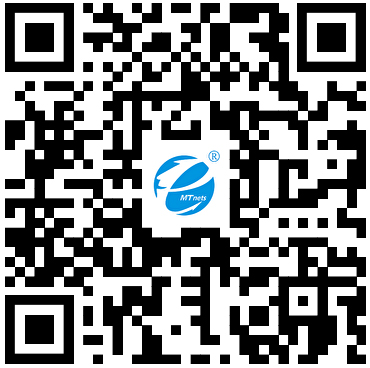C1q Protein說明書

產品描述
C1q separated from C1r and C1s and from other stabilizing proteins tends to aggregate easily. Because it was isolated and studied in numerous research laboratories, many buffers have been used to stabilize concentrated C1q and prevent aggregation. About half of the scientists prefer high salt and the other prefer 40% glycerol in the storage buffer. Thus, Biohub sells C1q at 1 mg/mL in both buffers A099 in high salt and A100 in salt plus 40% glycerol). No measurable difference in functional activity, storage stability or aggregation has been detected at Biohub, but strong preferences still persist in the research community. C1q is purified from pooled normal human plasma. C1q is part of the C1 complex and this complex is the first complement component in the cascade referred to as the classical pathway of complement. C1 is actually a non-covalent assembly of three different proteins (C1q, C1r, and C1s) bound together in a calcium-dependent complex. C1q has six extended arms with domains at the end of each arm that bind to the Fc domains of immunoglobulins. When antibodies bind to antigens forming immune complexes they cluster allowing two or more of its six arms of C1q to bind to the Fc domains of antibodies such as IgG or IgM. The binding of multiple arms to immune complexes causes the two C1r proteins in the complex (protease zymogens) to autoactivate producing two C1r proteases that cleave and activate the two C1s protease zymogens in the complex. Activated C1s cleaves complement component C4 releasing C4a and initiating covalent attachment of C4b to the activating surface. Activated C1s also cleaves C2 and the larger fragment of C2 binds to the surface-attached C4b forming C4b,C2a which is the C3/C5 convertase of the classical pathway.
產品性質
Sizes Available: 1000 µg/vial Concentration: 1.0 mg/mL (see Certificate of Analysis for actual concentration)
Form: Frozen liquid Activity: > 1,000,000 C1H50 units/mg
Purity: > 98% by SDS PAGE
Buffer: 10 mM HEPES, 300 mM NaCl, pH 7.2
Extinction Coeff. A280 nm = 0.68 at 1.0 mg/ml for pure C1q
Molecular weight: 410,000 Da (18 chains)
Preservative: None, 0.22 µm filtered.
Source: Normal human serum (shown by certified tests to be negative for HBsAg, HTLV-I/II, STS, and for antibodies to HCV, HIV-1 and HIV-II).
Precautions: Use normal precautions for handling human blood products.
產品組分
C1q is a high molecular weight complex of 18 polypeptide chains. Each of the six arms of C1q contains three chains, an A chain (26,000 daltons), a B chain (25,000 daltons) and a C chain (24,000 daltons). The three chains are coiled into a collagen-like triple helix over approximately half their length. Half of this collagen region forms a central core where all 18 chains come together. The chains are joined in this core by disulfides in the pattern A-B and C-C. There is a bend in the center of the collagen region allowing the arms to extend away from each other. Globular heads at the far ends of the collagen arms possess binding sites for Fc domains of immunoglobulins.
C1 complex is composed of one C1q molecule (410,000 daltons), two C1r molecules (92,000 daltons) and two C1s molecules (86,000 daltons). The complex is stable in the presence of calcium, but easily dissociates if calcium is removed. When C1 is activated the C1r and C1s subunits are each cleaved into two chain molecules due to proteolytic activation. Thus, the SDS gel pattern of C1 is very complex.
注意事項
This protein is purified from human serum and therefore precautions appropriate for handling any blood-derived product must be used even though the source was shown by certified tests to be negative for HBsAg, HTLV-I/II, STS, and for antibodies to HCV, HIV-1 and HIV-II.
運輸及保存方法
-70℃ or below. Avoid freeze/thaw.
產品用途
The biological functions of C1q are described above in the General Description and Physical Characteristics sections. C1q functional activity may be assayed using C1q depleted serum. These assays are extremely sensitive to C1q typically yielding 50% lysis with less than 2 ng C1q in assays measuring the lysis of EA cells (Dodds, A.W. and Sim, R.B. (1997); Morgan, B.P. (2000)).
C1q is used to coat ELISA plates to capture and quantitate immune complexes in clinical samples. A number of commercial companies sell diagnostic kits for immune complex detection and quantitation. These kits are based on the ability of C1q to bind well to immune complexes, but to not bind significantly to monomeric immunoglobulins.
| 貨號 | 品名 | 規格 | 品牌 |
| 78AH10003-1000ug | C1q Protein | 1000ug | BIOHUB |
相關產品
免責聲明
- 凡本網注明“來源:化工儀器網”的所有作品,均為浙江興旺寶明通網絡有限公司-化工儀器網合法擁有版權或有權使用的作品,未經本網授權不得轉載、摘編或利用其它方式使用上述作品。已經本網授權使用作品的,應在授權范圍內使用,并注明“來源:化工儀器網”。違反上述聲明者,本網將追究其相關法律責任。
- 本網轉載并注明自其他來源(非化工儀器網)的作品,目的在于傳遞更多信息,并不代表本網贊同其觀點和對其真實性負責,不承擔此類作品侵權行為的直接責任及連帶責任。其他媒體、網站或個人從本網轉載時,必須保留本網注明的作品第一來源,并自負版權等法律責任。
- 如涉及作品內容、版權等問題,請在作品發表之日起一周內與本網聯系,否則視為放棄相關權利。
 手機版
手機版 化工儀器網手機版
化工儀器網手機版
 化工儀器網小程序
化工儀器網小程序
 官方微信
官方微信 公眾號:chem17
公眾號:chem17
 掃碼關注視頻號
掃碼關注視頻號

















 采購中心
采購中心